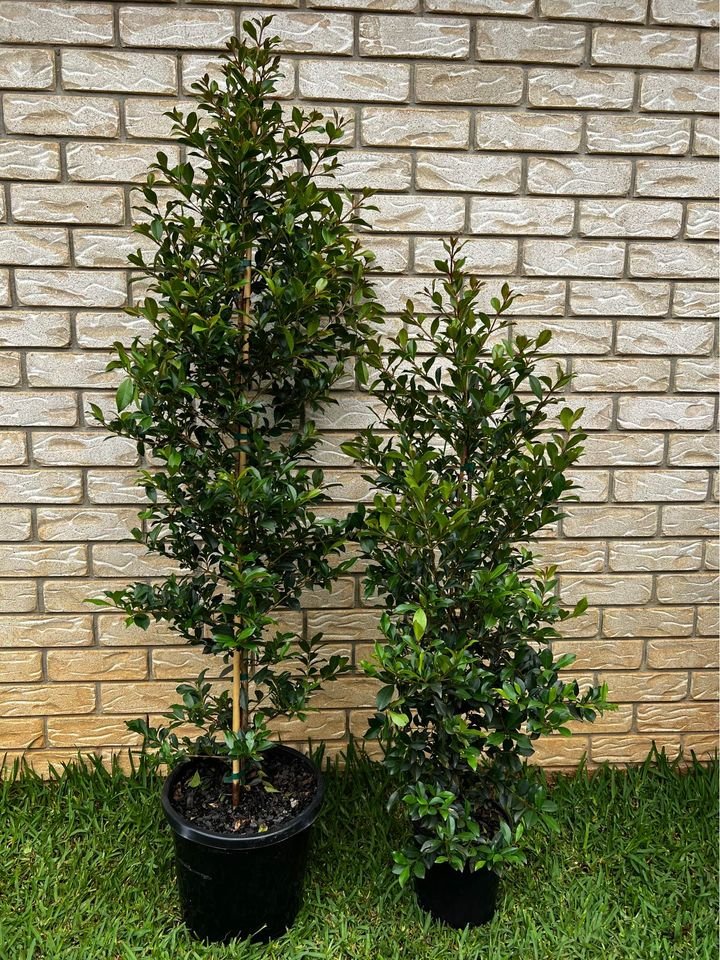Understanding the Difference
What is Screening?
Screening refers to using plants of varying heights and textures to create a more natural-looking privacy barrier. Plants are allowed to grow in their natural form with minimal shaping, creating a layered, garden-like appearance.
What is Hedging?
Hedging involves planting a single species in a line and regularly trimming to maintain a precise shape and size. This creates a formal, structured appearance that acts as a living wall.
Fast Growing Hedge Plants For Privacy in Southeast Queensland
Screening Plants
- Bamboo (Non-invasive varieties)
- Height: 3-6m
- Growth rate: Fast (1-2m per year)
- Best for: Immediate privacy
- Heliconia
- Height: 2-4m
- Growth rate: Fast
- Best for: Tropical look
- Native Ginger
- Height: 1.5-2.5m
- Growth rate: Moderate
- Best for: Partially shaded areas
Hedging Plants
- Lilly Pilly 'Resilience'
- Height: 3-5m
- Growth rate: Fast
- Best for: Formal hedges
- Murraya paniculata
- Height: 3-5m
- Growth rate: Moderate to fast
- Best for: Fragrant hedges
- Japanese Box - Buxus
- Height: 1-2m
- Growth rate: Moderate
- Best for: Low formal hedges
Pros and Cons
Screening
Advantages:
- More natural appearance
- Less maintenance
- Variable heights create interest
- Better wildlife habitat
- Can combine different species
- More likely to flower
Disadvantages:
- Less formal appearance
- May take up more space
- Can look untidy if not managed
- Variable privacy levels
- Harder to maintain straight lines
Hedging
Advantages:
- Formal, neat appearance
- Precise control over size
- Clear boundary definition
- Consistent privacy level
- Takes up less space
- Easy to measure and plan
Disadvantages:
- Regular maintenance required
- More susceptible to disease
- Less wildlife-friendly
- Can look bare if damaged
- Limited design flexibility
Choosing the Right Option
Consider Your Style
- Formal Garden
- Hedging recommended
- Clean lines
- Structured appearance
- Traditional look
- Natural Garden
- Screening recommended
- Relaxed appearance
- Mixed plantings
- Contemporary look
Space Assessment
- Narrow Areas
- Hedging often better
- Precise width control
- Vertical emphasis
- Wider Areas
- Screening possible
- Layered plantings
- Depth creation
Maintenance Requirements
Screening Maintenance
Regular Tasks:
- Light pruning as needed
- Remove dead material
- Monitor plant health
- Maintain mulch layer
Frequency:
- Pruning: A few times per year
- Health checks: Monthly
- Fertilising: Quarterly. Some liquid fertilisers can be used monthly
- Mulching: Annually
Hedging Maintenance
Regular Tasks:
- Regular trimming
- Shape maintenance
- Disease monitoring
- Gap prevention
Frequency:
- Trimming: Every 6-8 weeks
- Health checks: Monthly
- Fertilising: Quarterly. Some liquid fertilisers can be used monthly
- Mulching: Annually
Planting Guidelines
For Screening
- Average Plant Spacing
- Large plants: 2-3m apart
- Medium plants: 1-2m apart
- Small plants: 0.5-1m apart
- Layering Technique
- Tall plants at back
- Medium height in middle
- Lower plants in front
For Hedging
- Average Plant Spacing
- Large hedges: 1-1.5m apart
- Medium hedges: 70cm-1m apart
- Small hedges: 30cm-70cm apart
- Planting Tips
- Plant in a straight line
- Consistent spacing
- Level planting depth
Frequently Asked Questions
How long until I have complete privacy?
With fast-growing plants, reasonable privacy can be achieved in 12-18 months. Complete privacy typically takes 2-3 years, depending on plant choice and growing conditions. Screening can provide quicker results if larger plants are used initially.
Which option requires less maintenance?
Screening generally requires less frequent maintenance than hedging. While screening needs occasional pruning and tidying, hedging requires regular trimming to maintain its formal shape, typically every 6-8 weeks during the growing season.
Can I mix screening and hedging in my garden?
Yes, combining both approaches can create interesting garden designs. For example, use hedging for boundary definition and screening for specific areas requiring privacy or visual interest.
What's the fastest way to get privacy in my garden?
For immediate privacy, consider fast-growing screening plants like bamboo or install mature hedge plants. Combining temporary screens (like reed screening) with growing plants can provide privacy while your permanent solution establishes. Ensure the reed screen doesn't blockout all the sunlight from the plant.
How much will I need to water new privacy plants?
During establishment (first 12 months), water deeply 2-3 times per week in summer and 1-2 times in winter. Adjust based on rainfall and temperature. Once established, most privacy plants need less frequent watering.
Conclusion
Whether you choose screening or hedging depends on your garden style, maintenance capacity, and privacy needs. Both options offer effective solutions for creating privacy in Southeast Queensland gardens when properly planned and maintained.
Need expert advice on selecting the right privacy solution? Our qualified horticulturists can help you choose the best plants for your specific situation. Contact us for personalised guidance or browse our premium-quality screening and hedging plants, delivered directly to your door across Southeast Queensland.














